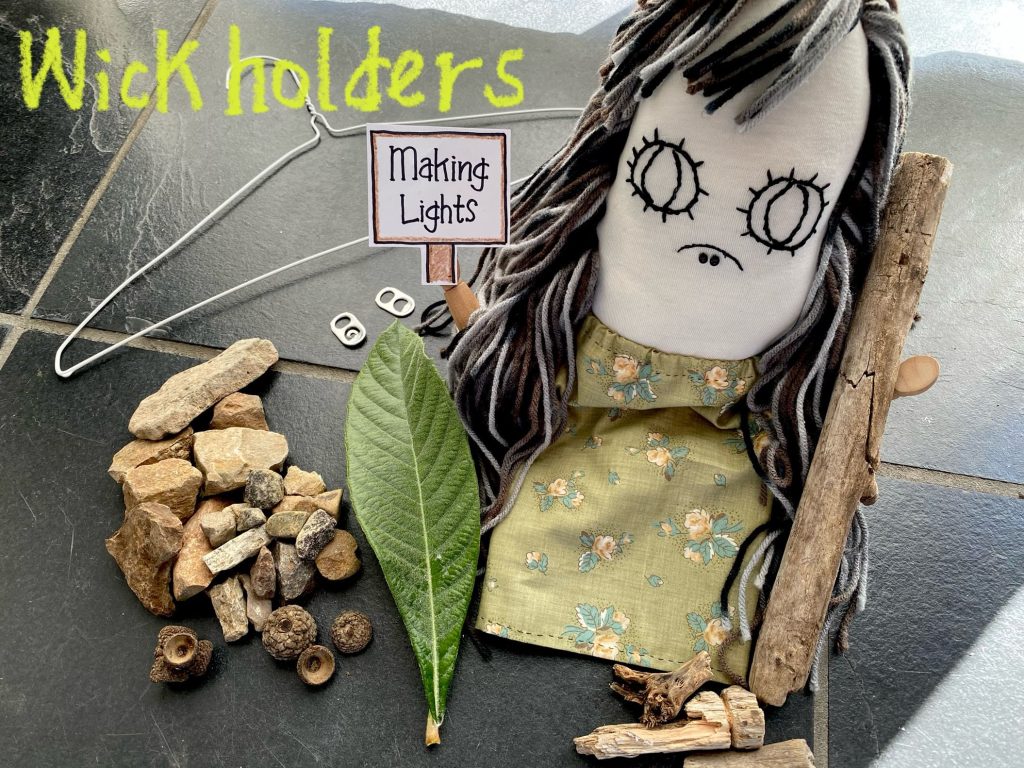
How can I make a wick holder for an oil lamp in an emergency?
What is a wick holder??
Wick, like the wick in a candle? Is that the same thing?
I see. The lamp won’t work if the wick is just floating in the oil. So we need a wick holder, right?
After a big disaster or prolonged emergency, you might need to do a lot of “DIY.” Making oil lamps is one daily necessity you can take care of yourself. Now, it might be difficult to think about long-term emergency situations, and you might not have time to practice making handmade oil lamps, during your busy day. But just keep these techniques in the back of your mind. If the big one hits, the internet goes down, and the power grid goes out, you can remember the gist of this post, and dig up the tidbits from the corners of your brain. I tried to do these as easily and simply as possible. (So that it’ll be easy to remember, but also because I am a lazy person…)
I talked about making oil for oil lamps, in an earlier post (see post # 72) and about making wicks and lamp trays, in my previous post (see post # 73 ). Finally, we are almost at the end of our DIY oil lamp journey. The last step is to make the wick holder.
The long-term emergency will be a war, major climate disaster, nuclear winter, giant meteorite, food crisis, etc.
If such an event were to happen, we should not expect immediate support from government, and we would have to survive by ourselves.
We might feel that there’s no end in sight.
Why we need a wick holder
First, we need to think of a way to keep our wick afloat, without it falling all the way into the oil. If you use an oil tray, like a cocked hat lamp, you will not need wick holder. But if you want to use deep tray or jar, you will need a wick holder. These images are depictions of wick holders in makeshift oil lamps.
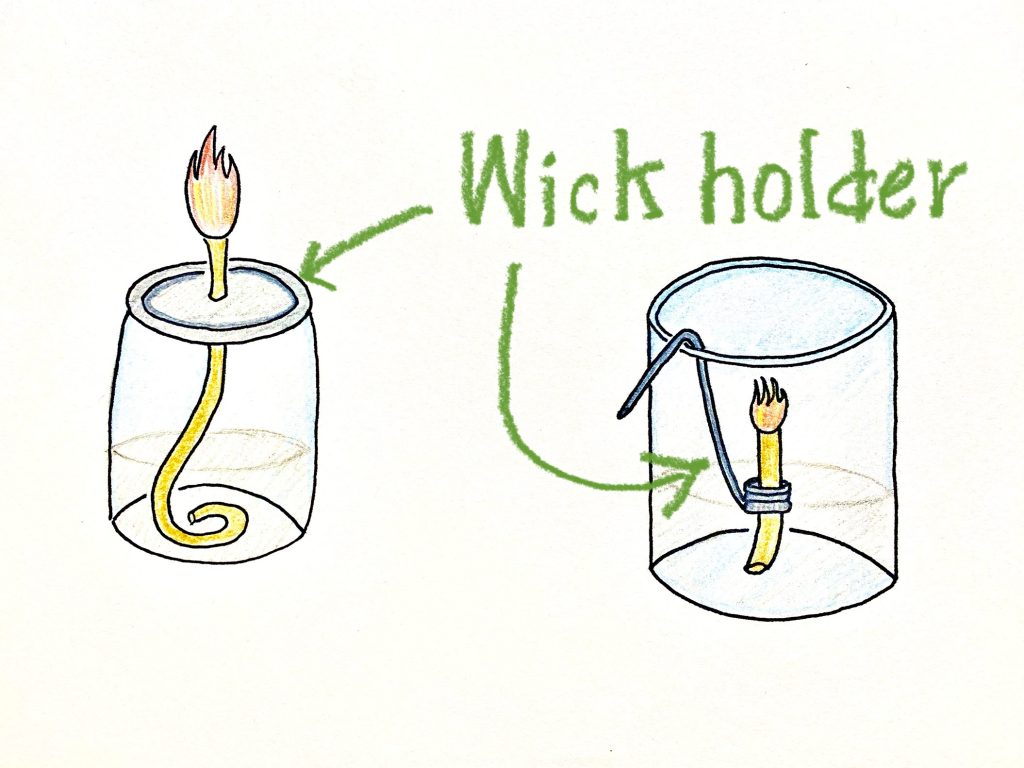
Let’s try to make the wick holder
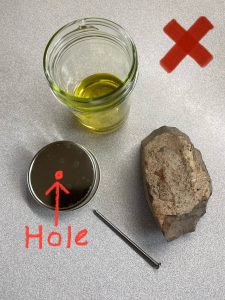
If we can find a perfectly shaped glass jar with a metal lid, we can poke a hole in the middle of the lid to serve as a wick holder. But if we can’t find a jar with a good lid, or if we want to keep the jar for other purposes (who knows, jars may be precious commodities after a major catastrophe), then we can skip making the hole. Let’s explore some other options.
We will have to improvise using limited resources, in a true long-term emergency. I picked up these goods and used them for my oil lamps.
★ Rocks
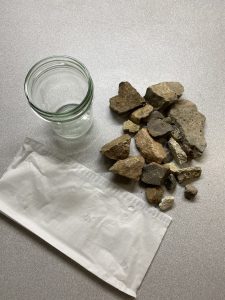
I am sorry for using facial tissues as my wicks. For me, tissues are very convenient, versatile items for emergencies,
and I always have some in my pockets and bag.
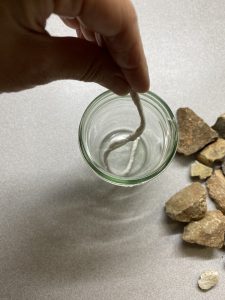
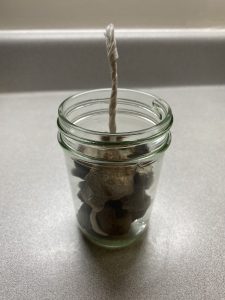
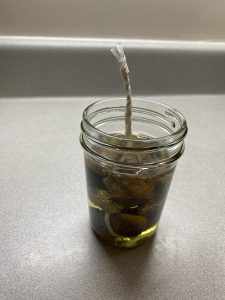
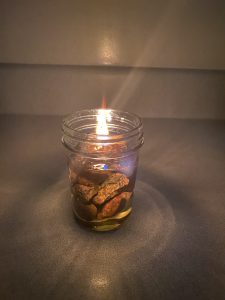
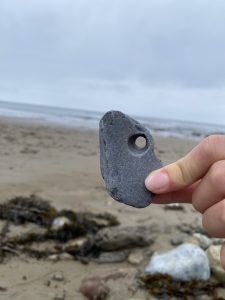
★ Thin wire

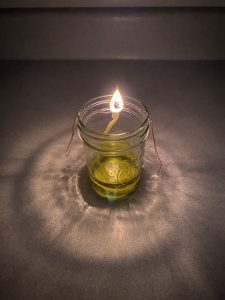
★ Dry wood
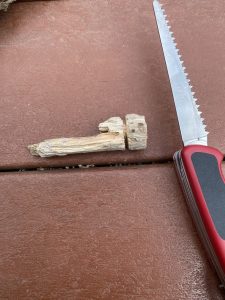
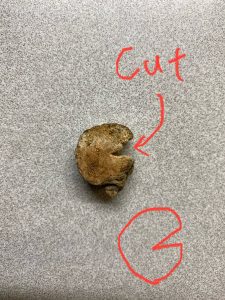
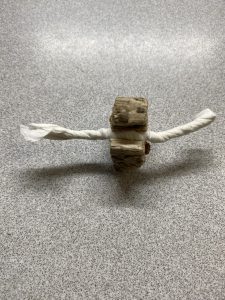
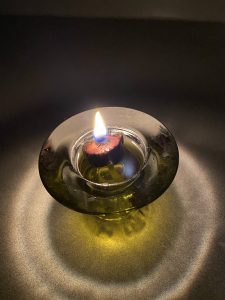
★ Fresh leaf
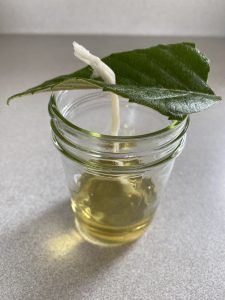
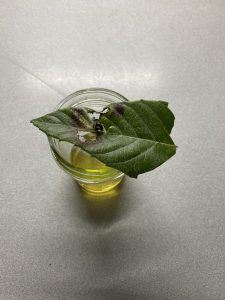
I realized that the oil and wick are more difficult to get
than the tray and wick holder, for DIY oil lamps.
Some wick holder materials will be difficult to find during emergencies or during the wintertime. We should not forget to prepare ahead of time. Now you know how to make an oil lamp by yourself, in a long-term emergency. But wait a minute…. Avocado oil? Where is our avocado tree during the long-term emergency?? Yes! That is a problem… I am going to talk about seeds in a future post, and in my next post, I will explain other ways to get oil for your oil lamps. I want you to know, there are other ways to get oil from food. If you know the technique to get oil, you can use that skill for other things too.
See you next time.
Remember, “Protect your life by yourself” (自分の命は自分で守る). You need to survive first, and then you need your emergency supply. No matter how well you prepared your emergency supplies, if you die, then all of your preparations will have been for nothing. First and foremost, keep your health up all the time. Build your stamina so that if you need to, you can evacuate as quickly as possible. Stay healthy.